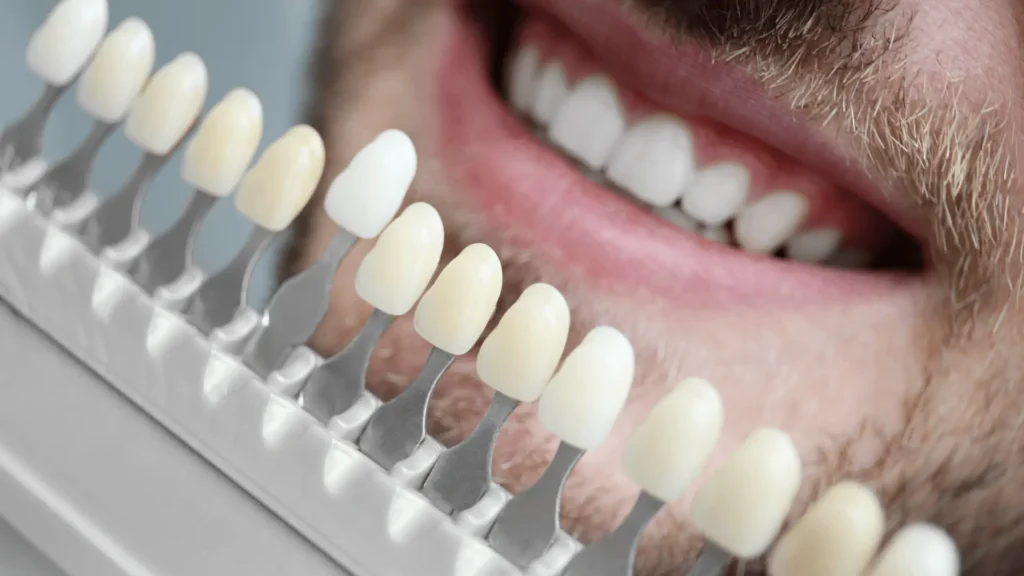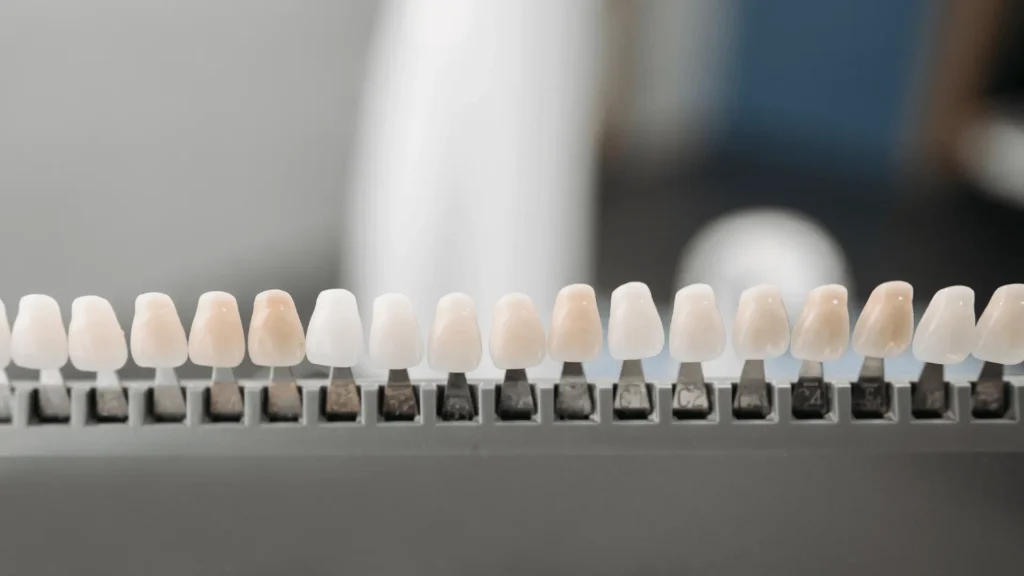Does Insurance Cover Veneers, Are You Safe?
Does Insurance Cover Veneers, Are You Covered, Dental insurance generally does not cover veneers because they are considered a cosmetic procedure, designed to improve the appearance of teeth rather than address a medical need. Cosmetic treatments, such as veneers, are typically not covered under standard dental insurance policies, which focus more on preventive care, basic restorations, and medically necessary treatments.
Exceptions: There are cases where insurance may cover veneers, such as when they are needed due to trauma, severe decay, or structural damage that affects the function of your teeth. If veneers are deemed medically necessary in these scenarios, some insurance plans may cover part of the cost.
We’ll explore these exceptions further in the article, along with steps to check your own insurance policy for any potential coverage.

What Are Dental Veneers?
Dental veneers are thin, custom-made shells crafted from porcelain or composite resin that cover the front surface of teeth to improve appearance. They are commonly used to correct issues like discoloration, gaps, minor chips, or uneven tooth shapes.
There are two main types of veneers:
Veneers are popular due to their ability to create a smooth, uniform smile with minimal alteration to the natural tooth structure. However, because they are primarily used for aesthetic improvements, they fall under the category of cosmetic dentistry.
Overview of Dental Insurance
Dental insurance typically focuses on preventive and restorative care, such as cleanings, fillings, and crowns, which are essential for oral health. Standard policies often exclude procedures that are classified as cosmetic, which is why veneers are rarely covered. The purpose of these policies is to support treatments necessary for dental health, rather than appearance.
Further, You can also select the perfect insurance agent, with guidelines, and qualities that will helpful for you in any insurance such as, Invisalign, gap or dental.
Why Insurance Typically Doesn’t Cover Veneers
Does Insurance Cover Veneers
Cosmetic vs. Medical Coverage
Insurance policies generally focus on covering procedures that are medically necessary to maintain or restore oral health. Treatments that are strictly for cosmetic improvement, like veneers, fall outside the scope of what most policies define as essential care.
Veneers improve appearance but don’t typically contribute to the health or function of teeth, which is why insurers often exclude them from coverage.
Understanding “Medical Necessity” in Insurance Terms
To qualify for coverage, a treatment usually needs to meet a specific standard of “medical necessity.” This term means that the procedure is essential to restore or maintain the health, function, or structure of a tooth or teeth.
For example, treatments to repair a tooth after severe damage or decay could be considered medically necessary. However, veneers, which are usually chosen to correct minor aesthetic issues like color or shape, don’t often meet this criterion in the eyes of insurers. Even though veneers can protect a tooth from further wear, they are still classified as cosmetic if the primary goal is to enhance appearance.
This distinction explains why veneers are typically an out-of-pocket expense and rarely covered by standard dental insurance.
When Are Veneers Covered by Insurance?
While most insurance policies exclude veneers, there are specific situations where coverage may be possible like Chiropractic coverage. In these cases, veneers must address a health-related need rather than just a cosmetic preference. Below are the main scenarios in which insurance might help cover the cost of veneers.
Injury or Trauma
If your teeth are damaged due to an accident or trauma—such as a fall or sports injury—insurance might cover veneers as part of a larger restorative treatment plan. In these cases, veneers are considered necessary to restore the tooth’s structure and function rather than simply improve appearance.
Severe Decay or Enamel Loss
When a tooth is affected by extensive decay or serious enamel erosion, a veneer may be necessary to protect the tooth from further damage. In this scenario, veneers can help restore the tooth’s integrity and function, potentially qualifying them for insurance coverage if deemed medically necessary.
Rare Policy Exceptions
Some insurance plans offer more comprehensive options, which may include coverage for veneers under specific conditions. For example, certain high-end policies may include cosmetic or semi-cosmetic procedures in specific cases. If you have a more flexible policy, it’s worth checking for any clauses related to cosmetic restorations or additional coverage options that might apply to veneers.
You have also explore the retirements solution here.
How to Get Veneers Covered by Insurance

If you believe your situation could qualify for insurance coverage for veneers, there are steps you can take to check and potentially secure coverage. Below are some practical steps to guide you through the process.
How to Check Your Insurance for Potential Coverage
Review Your Policy Carefully
Look over your insurance policy’s details on “cosmetic exclusions” and “restorative procedures.” These sections will clarify if and when your plan considers cosmetic treatments necessary or eligible for coverage.
Contact Your Provider
Reach out directly to your insurance provider and ask specific questions about coverage for veneers in cases of trauma or severe dental issues. Insurance agents can explain what situations might qualify as “medically necessary,” which is key to obtaining coverage.
Are Out-of-Network Veneers Covered?
If your dentist is out-of-network, it’s important to ask about coverage options. Some plans may offer partial reimbursement for out-of-network providers, but knowing your plan’s limitations upfront will help you plan financially.
Get Assistance from Your Dentist
Your dentist can provide detailed documentation or an official statement describing why veneers are necessary for your oral health. Insurers are more likely to consider coverage when there is a clear, professional explanation from a qualified dental provider.
How to Find Dental Veneers Covered by Insurance
If your policy doesn’t offer any flexibility for veneers, consider researching alternative insurance options or plans that may offer better cosmetic coverage. Some high-tier dental plans, or policies designed for extensive restorative care, may include partial coverage for veneers. Comparing different providers and asking about cosmetic inclusions can be beneficial.
Cost of Dental Veneers
The cost of dental veneers can vary widely based on several factors, including the type of material used, the complexity of the procedure, and your geographic location. Here’s a breakdown of what to expect:
Average Pricing
Factors Influencing the Cost
Additional Costs to Consider
Insurance and Financing
Since veneers are typically considered a cosmetic procedure, insurance coverage is rare, making it essential to explore financing options if necessary. Many dental offices provide payment plans that allow you to spread the cost over time.
What to Do if You Can’t Afford Dental Veneers
If your insurance doesn’t cover veneers and you’re concerned about the cost, there are several ways to make veneers more affordable. Here are some options that can help:
Consider Financing Options
Many dental offices offer financing plans that allow you to pay for veneers in installments instead of all at once. Popular financing providers like CareCredit offer flexible payment plans specifically for healthcare expenses, including dental work. This approach can make veneers more affordable over time, rather than requiring a large upfront payment.
Explore Dental Discount Plans
Dental discount plans are membership-based programs that provide discounted rates on various dental procedures. While they’re not the same as insurance, these plans can lower the cost of veneers by 10%–50%, depending on the provider and specific plan. This option may be useful if you need multiple veneers or have a comprehensive treatment plan.
Look for Dental Schools Offering Reduced-Cost Procedures
Dental schools often offer cosmetic and restorative treatments at a reduced cost. Procedures are performed by supervised dental students, making it a more affordable way to access quality care. Check with accredited dental schools in your area to see if they provide veneers.
Prioritize the Most Visible Teeth First
If full-mouth veneers aren’t affordable, you may want to prioritize the most visible teeth, such as the front upper teeth. This approach can improve your smile’s appearance while reducing the total cost of treatment.
Saving and Budgeting for Veneers
Setting up a dedicated savings plan to fund veneers over time can be a helpful way to manage the cost. By setting aside a fixed amount each month, you can work towards getting veneers without needing to rely solely on loans or credit.
Conclusion and Final Thoughts
Understanding whether insurance covers veneers is essential for anyone considering this cosmetic dental procedure. Generally, veneers are not covered by insurance since they are primarily cosmetic. However, in specific cases involving trauma or medical necessity, there may be exceptions.
Key Takeaways
Ultimately, while the cost of veneers can be significant, there are ways to make them more accessible. Taking proactive steps to understand your insurance coverage and exploring financial options can help you achieve the smile you desire.






